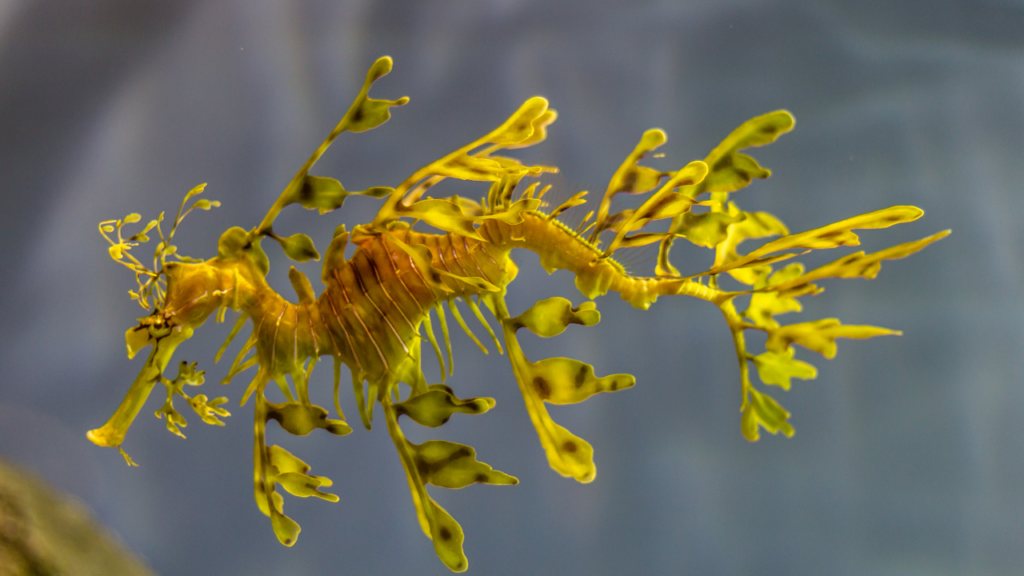Have you ever seen a sea dragon? When encountering the awe-inspiring beauty and gracefulness of a sea dragon gliding through the water, it’s hard not to be captivated. These majestic creatures possess a remarkable ability to blend into their surroundings, ensuring their safety and survival in the vast ocean. As I stood in wonder, observing the sea dragon for the first time, it sparked a profound reflection on the parallels between these enchanting creatures and ourselves as human beings.
In our journey through life, we often encounter situations where we must navigate the delicate balance between celebrating our uniqueness and finding the need to blend in with our communities. This concept holds special significance in the realm of social-emotional learning, where teaching children to appreciate their individuality while understanding the importance of adapting to social environments is vital.
As educators, parents, or caregivers of children, it is essential to help them understand when to stand out and when to blend in, like the sea dragon.
Celebrate Your Uniqueness
Just like the sea dragon’s distinctive appearance, each one of us possesses a unique set of qualities, talents, and characteristics that make us special. It is essential to foster an environment where celebrating individuality is encouraged and embraced. By recognizing and valuing our differences, we create a rich tapestry of diversity that enriches our communities and allows us to thrive together.
Through social-emotional learning, we can guide children to explore and appreciate their own unique qualities. For example, we celebrate the artistic souls who express themselves through painting, drawing, or sculpting. We embrace the melodious musicians who bring joy through their music. We acknowledge the masterful mathematicians who excel in problem-solving. We cheer on the athletic dynamos who showcase physical prowess and love for sports. We cherish the creative problem-solvers who think outside the box and find innovative solutions to complex challenges. By celebrating our individuality and embracing these unique qualities, talents, and characteristics, we cultivate an environment that values diversity and encourages personal growth.
Blending In to Navigate Social Situations
However, just as the sea dragon knows when to blend into its surroundings, we, too, must develop the wisdom to discern when it is appropriate to adapt to social situations. In the vast ocean of life, there are times when standing out may attract unwanted attention or put us at risk of being misunderstood or even hurt.
Teaching children the art of blending in is crucial for their emotional well-being. It involves helping them understand the social dynamics at play, reading social cues, and adapting their behavior accordingly. This doesn’t mean suppressing individuality but rather demonstrating the importance of empathy, understanding, and harmonious coexistence within a community.
It takes time to teach children the importance of being aware of others’ feelings and needs, and guide them on when it might be appropriate to blend in. You can begin by:
Showing Empathy and Support
Encourage your child to recognize when a classmate or friend is feeling sad, upset, or in need of support. Teach them to blend in by offering empathy, listening attentively, and providing kind words or gestures to comfort their friend. By understanding and responding to the emotions of others, children learn the importance of being compassionate and supportive members of their community.
Respecting Others’ Opinions
In social settings, such as family gatherings or group discussions, children can practice blending in by taking turns speaking and listening attentively. Encourage them to show respect for others’ opinions, even if they differ from their own. By considering different perspectives and valuing diverse opinions, children learn to navigate social situations with grace and foster healthy relationships based on mutual respect.
Adapting to Group Activities
Sometimes, children may need to adapt their behavior to fit in with a group during games, sports, or group projects. Teach them the importance of cooperating, following rules, and working collaboratively with others. By blending in with the expectations and dynamics of the group, children learn valuable teamwork skills and contribute to a positive group experience.
Understanding Cultural Norms
In diverse settings, it’s essential to help children understand and respect different cultural norms and traditions. Teach them about cultural sensitivity, such as greeting others in appropriate ways or observing customs during special occasions. By blending in with cultural practices when appropriate, children demonstrate respect and inclusivity, fostering a sense of belonging and appreciation for diverse cultures.
Practicing Flexibility
Encourage children to be flexible and adaptable in social situations. This includes being open to compromises, adjusting plans, or accommodating others’ preferences when appropriate. By blending in and showing flexibility, children develop valuable social skills that promote harmony and cooperation within their communities.
Striking the Balance
Striking a balance between celebrating uniqueness and blending in is essential. Encourage your child to embrace their individuality and celebrate their talents and interests. Simultaneously, teach them the importance of empathy, respect, and adaptability when navigating social situations.
Whether at home, school, or within the broader community, help your child find the balance between expressing themselves authentically and being considerate members of their community. By doing so, you empower them to thrive in their personal and social lives, nurturing the sea dragon within them while swimming harmoniously in the ocean of life.
Lessons from the Sea Dragon
By observing the sea dragon’s ability to stand out and blend in, we gain insights into celebrating our uniqueness and navigating social situations. By helping children understand when to stand out and when to blend in, we equip them with the social skills necessary for healthy relationships and effective communication. They learn to celebrate their uniqueness while also fostering inclusivity and harmony within their communities.
Ultimately, finding the right balance allows children to thrive both as individuals and as valuable members of their social groups. Just as the sea dragon finds its place in the underwater world, our children can find their place in the tapestry of humanity, contributing their unique brilliance to create a brighter and more harmonious future.
Links to Books & Activities on this topic:
Little Live Aqua Dragons
Aqua Dragons are real, live aquatic creatures that will hatch from eggs and grow into tiny dragon-like critters! Place the eggs into their Habitat Tank, and after 48 hours your tiny dragons will hatch and start swimming about! Keep their habitat healthy and they’ll grow into amazing tiny, three eyed, long tailed, hairy headed creatures.
Not Your Typical Dragon
Crispin wonders if he’ll ever find his inner fire. But when a family emergency breaks out, it takes a little dragon with not-so-typical abilities to save the day. Each time Crispin tries to breathe fire, he ends up with whipped cream, Band-Aids, marshmallows, teddy bears!
Not Your Typical Dragon is the perfect story for any child who can’t help feeling a little bit different.
Howard B. Wigglebottom Blends in Like a Chameleon
While observing a couple of chameleons, Howard helps his fried Joey learn how to pay attention to the expected behavior, then blend in like a chameleon.
Ths story is a nice balance of appreciating differences in learning while offering suggestions for following social norms.
Sea Dragons: Real Life Dragons
What looks like a sea horse covered with leaves? Its the sea dragon! Learn all about this real-life dragon that lives in the ocean off the coast of southern Australia.

